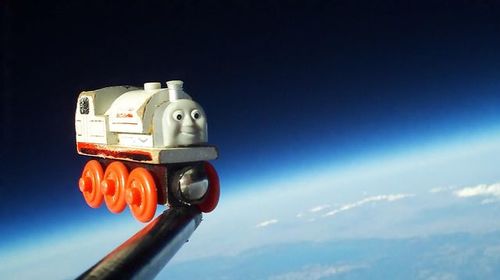Tragedy of the Light Year Train: Locomotion Explosion
 Scientists have built a train between worlds.
Scientists have built a train between worlds.
It goes so fast it'll make you hurl.
It stretches all the way to Alpha Centauri to Earth.
Don't even ask how much it's worth.
"What is its length?", you do beseech.
The train has
light years of reach.
This here train can sure vamoose:
It's
light years from Earth to its caboose.
The whole track is
light years long.
Everyone's boarding so come along.
Suddenly, something's gone wrong:
The front and back cars simultaneously explode.
They casted into space their loads.
Both ends burst and turned to stars.
The tragedy was seen afar.
witnesses along the track existed.
Their distances from Earth are listed.
(light years)
Nothing so horrid has ever been seen in locomotion.
How many years does it take for the average witness to see both explosions?

Details and assumptions:
-
Each distance is separated by a new line.
-
Round your answer to the nearest hundredth.
-
The list of distances can be found here .
The answer is 0.88.
This section requires Javascript.
You are seeing this because something didn't load right. We suggest you, (a) try
refreshing the page, (b) enabling javascript if it is disabled on your browser and,
finally, (c)
loading the
non-javascript version of this page
. We're sorry about the hassle.
What will be the average time if the train was moving at relativistic speed?